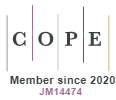Technical Production Reports Development Protocol
DOI:
https://doi.org/10.5585/gep.v3i2.121Keywords:
Technical Report, Prescriptive Papers, CIMO Logic, Master Professional, Project Management.Abstract
This study aims to provide basic tools to build a technical report in the area of Project Management to contribute to public disclosure and to develop tools to facilitate measurement of actual technical production within the academic and professional research, specifically as a result of the production effort of the Professional Masters in Business Administration in the field of Project Management. From the goal now exposed, this protocol presents a script that privileges the contribution of technical work done with a professional purpose, but with the rigor of scientific research. For this, it was developed a protocol adhering to technical production work experience par excellence, but with clear practical application that uses the precepts of academic research so as not to jeopardize the development of additional work in the form of future related scientific papers. The protocol is indicative and may be used to present the case in its entirety or, more specifically, to present a report on a topic of great relevance to the knowledge or experience in the study area, always aimed at prescribing solutions character technical and practical for the study correlated area.References
Kwak, Y. H., & Anbari, F. T. Analyzing project management research: perspectives from top management journals. International Journal of Project Management, v. 27, 2009, pp. 435-446.
Van Aken, J. E. Developing organization studies as an applied science using a triple learning approach. Disponível em: http:www.egosnet.org/jart/prj3/egosnet/data/uploads/OS_2007/W-057.pdf. Acesso em 21/08/2012.
Walker, D. H. T., Cicmil, S., Thomas, J., Anbari, F.,& Bredillet, C. Collaborative academic / practitioner research in project management. International Journal of Managing Projects in Business, v.1, n.1, 2008, pp. 17-32.
Downloads
Published
How to Cite
Issue
Section
- Abstract 5937
- PDF (Português (Brasil)) 3454







